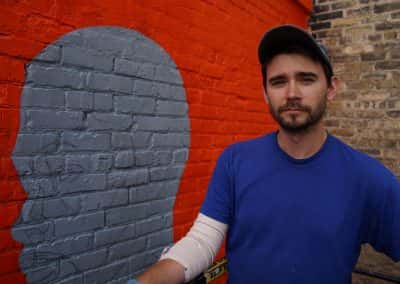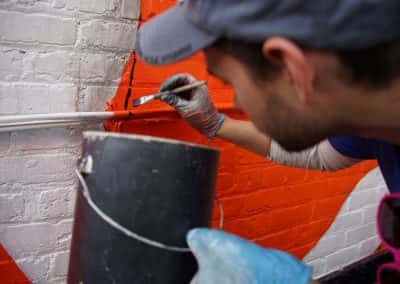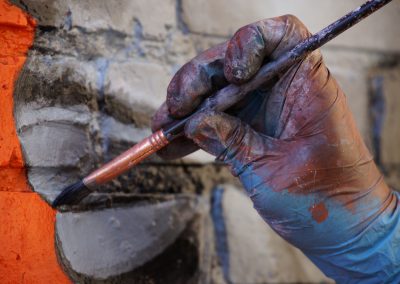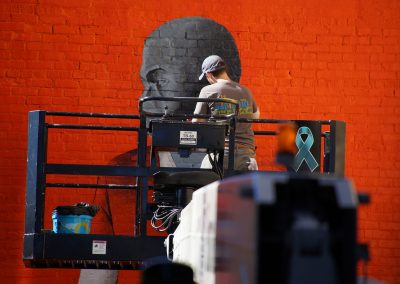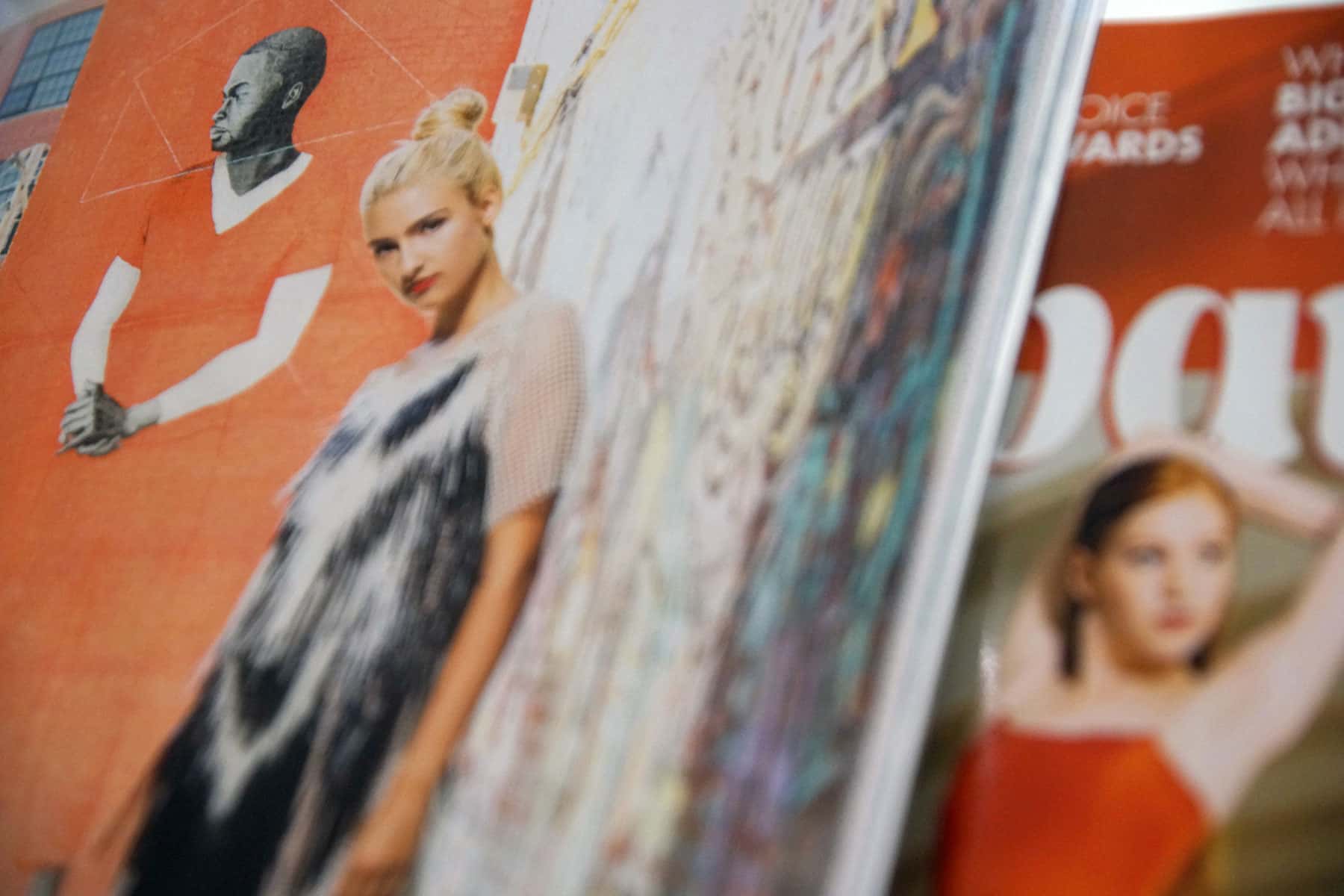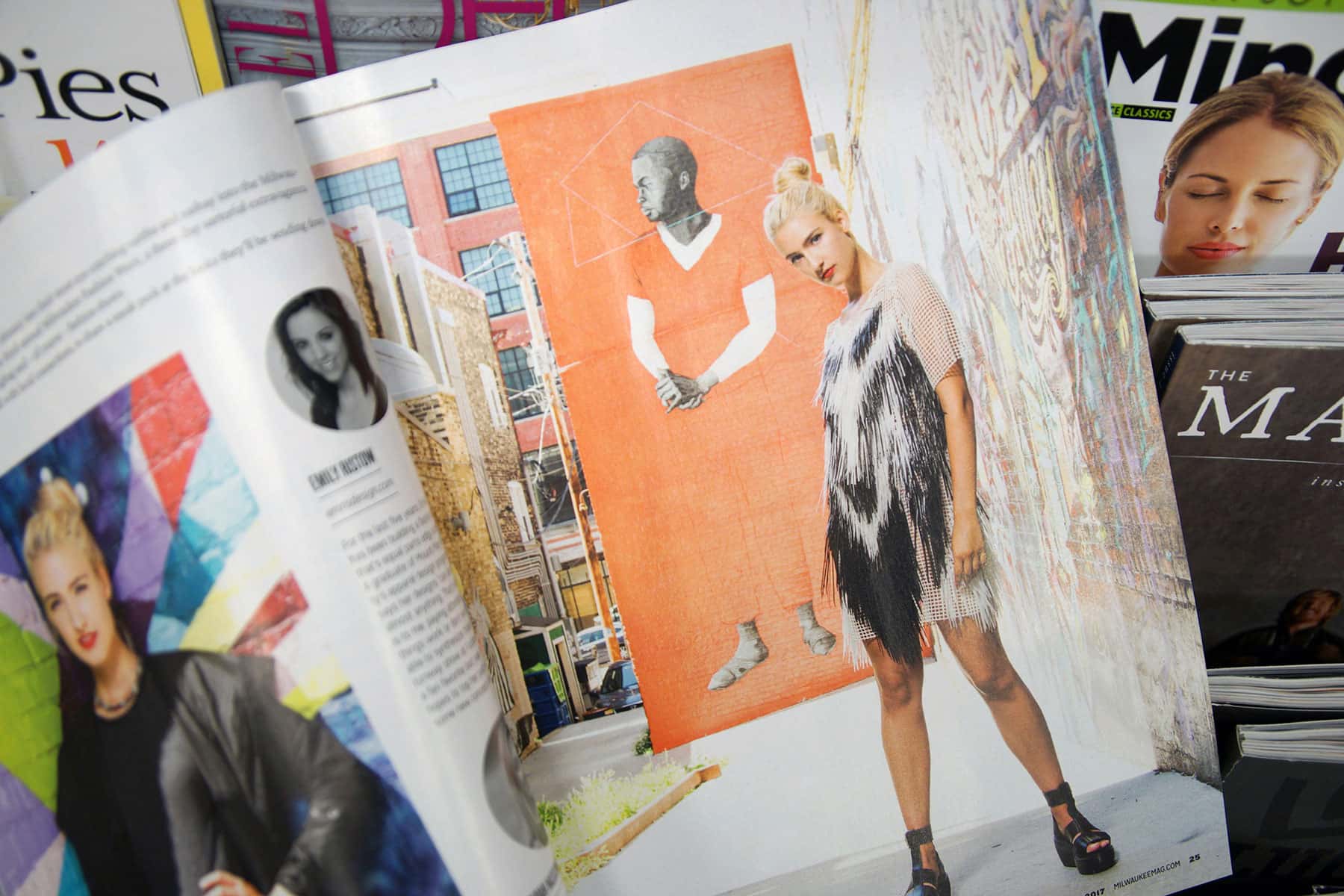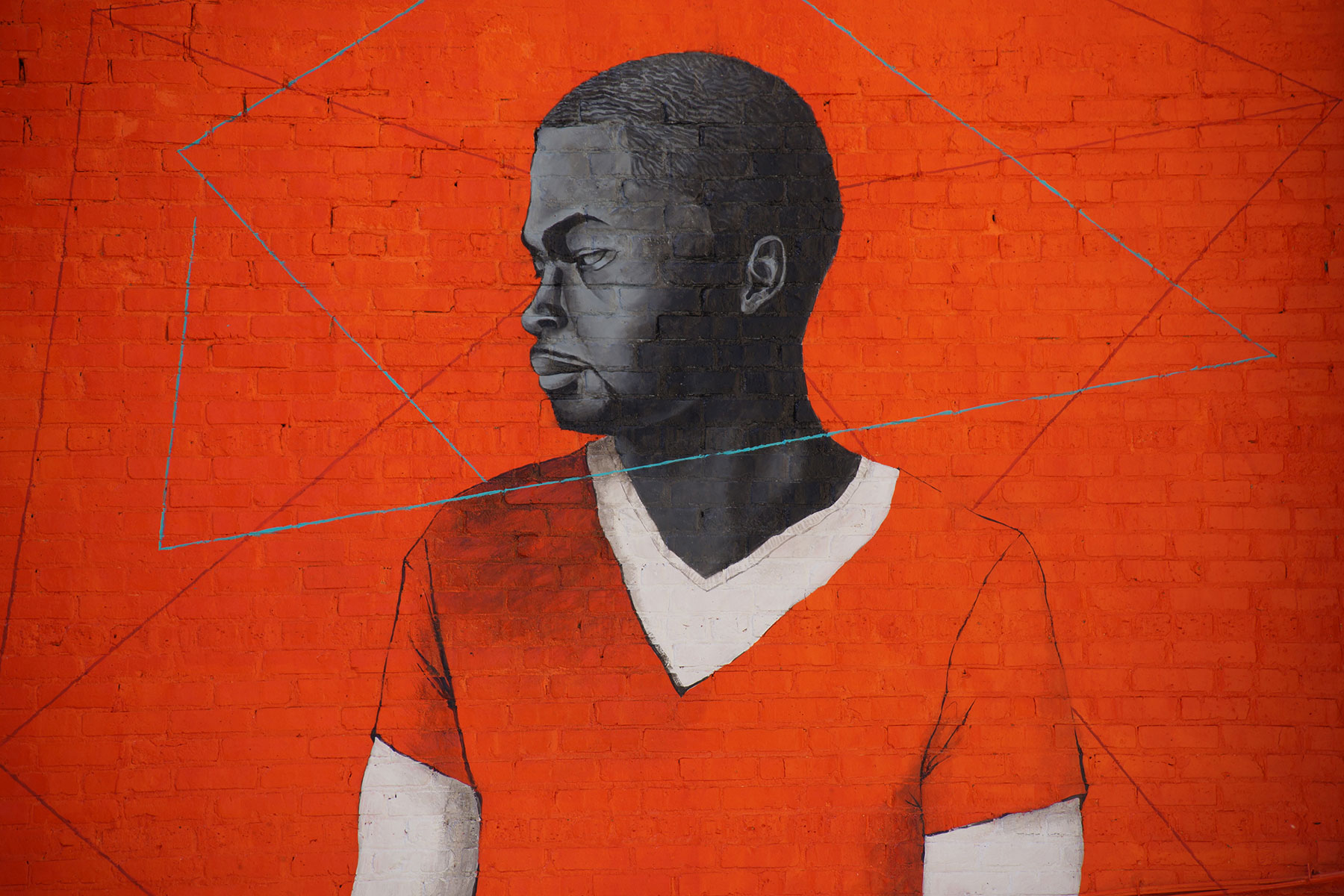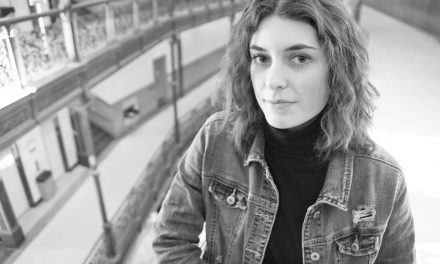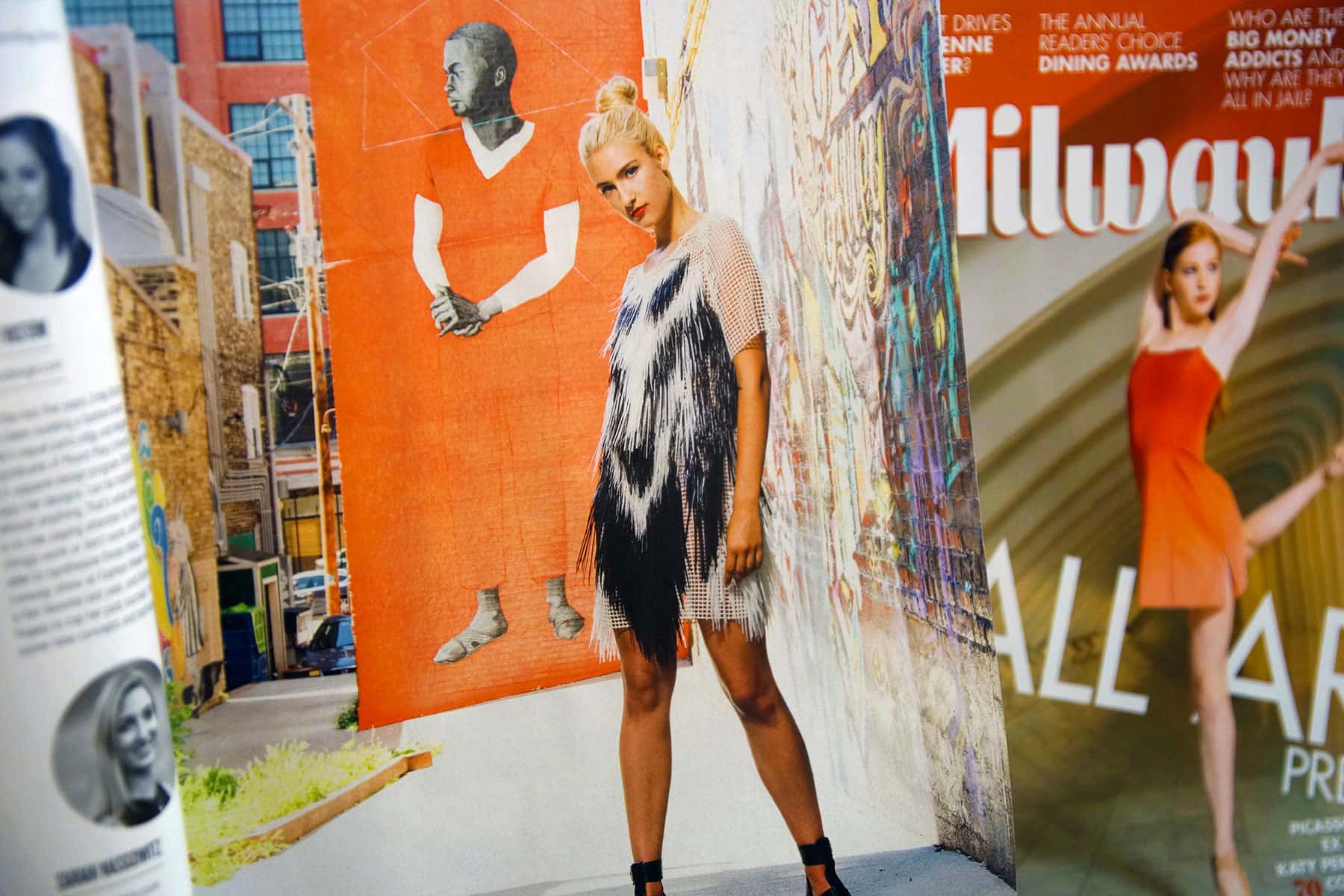
“Of the mixed criticism and affirmation I’ve received over my (Black Cat Alley) BCA mural, here is something that deeply disappoints me: in a single selfie we can instantly see how little the legacy of white supremacy and mass incarceration means to white people. Thanks to Clarene Mitchell for bringing this advertisement to our attention.” – Adam Stoner
Despite negative blowback that the marketing industry received after the failed Kendall Jenner Pepsi ad earlier this year, and countless other examples, the field continues to produce tone deaf and culturally aloof content.
A current case in point example is a feature article in the September 2017 issue of Milwaukee Magazine, about an upcoming fashion week. Instead of having the class that is supposed to be synonymous with high end fashion, one of the pages trivializes incarceration, a major Wisconsin Black disparity issue.
The article in question is called, A Cut Above. It boasts how dozens of “designers spent months cutting, sewing and finishing their 2017 collections for Milwaukee’s Fall Fashion Week in September.” The five-page spread includes models giving a sneak peek at some of the fashions and brief bios of the designers.
I’m not a fashionista, so I was only paying casual attention as I flipped through the pages. My attention abruptly fell into full focus, and my blood pressure went up, when I saw page three. I could not consentrate on the fashion itself because my eyes were fixated on the backdrop.
The model poses, in a minidress by Sarah Nasgowitz, in front of a mural of a Black man wearing ‘prison orange.’
The mural is one of many in Black Cat Alley, an open-air mural gallery on Milwaukee’s East Side. When visitors see the mural in person, it takes their breath away because of its large scale. The other art in the outdoor gallery ranges from whimsical to satirical. The painting ‘Devontay,’ of a Black man in prison orange, is bold and portrays the dark reality of far too many Black men in Wisconsin.
The artist, Adam Stoner, stated in a TMJ4 news clip when the mural was initially unveiled, “The image should never be normalized to anyone.”
As State Bar of Wisconsin President Fran Deisingerin stated in a March 1, 2017 article, “The issue of mass and disparate incarceration is one of the most important justice issues in our state.”
The City of Milwaukee has the largest population of Blacks in Wisconsin. The State of Wisconsin is known for having the highest incarceration rate of Black males in the country, most of them having been arrested and convicted in Milwaukee.
Considering this disparity, it is troubling to see a White model posed seductively in front of the mural. The details of the 4,000 plastic cable ties that make a geometric pattern in the minidress have no significance in contrast to the man with nothing but time on his hands that she stands before.
I’m not sure if the artistic director for the set design did this on purpose or out of ignorance. Nonetheless, it is a very disrespectful marketing approach in a city that is trying to move past being one of the most racially segregated in the country.
It is incumbent on marketing firms to diversify their ranks to allow for more culturally appropriate imaging. This problem has been known and talked about for decades. Recent reports reiterate the need, as nonwhite staff make up only 5 to 6 percent of marketing and advertising organizations nationally.
The time is long overdue for cultural inclusion at the creative and decision making tables for marketing campaigns. The group-think process, an exclusive club way of doing business, should not continue.
“I’m not a person of color, but as the leader of Black Cat Alley I feel I ought to comment. This juxtaposition is just awful, and I really can’t believe that people can be so blind to what they are shooting in the moment. I’d like to add my voice to condemning Milwaukee Magazine for this photo composition. However, I celebrate that this unfortunate thing is shining a light on the importance of Adam’s work. His painting is again drawing attention to profound injustices in our city.” – Stacey Williams-Ng
Extended coverage of Black Cat Alley includes articles, photo essays, video segments, and interactive location mapping:
Black Cat Alley Part 1: Transformative Art
Black Cat Alley Part 2: With Artists Richardson, Redmon, Stoner, McGibbon, Kristan
Black Cat Alley Part 3: With Artists Martinez, CERA, Kowalczyk, Minga, Reiss, Decker
Photo Essay: Black Cat Alley draws huge crowds
Map: East Side Art Destination
360° Video: Walking Among Murals
Video: The Color Orange

